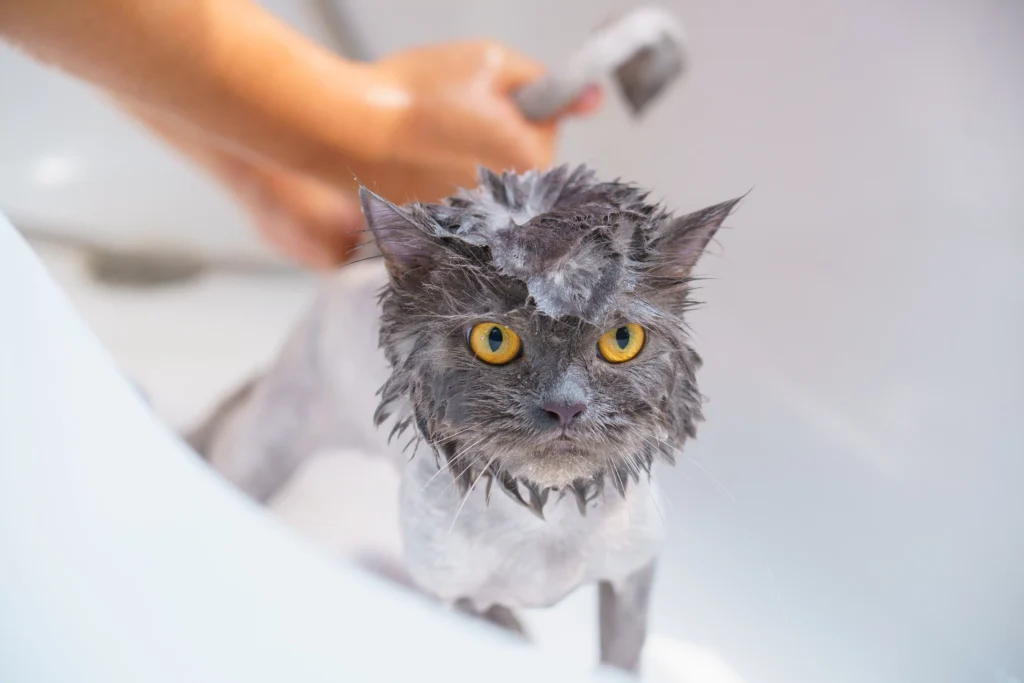For most cat owners, the mere mention of bath time elicits a combination of dread and amusement. Cats are notorious for their aversion to water, often transforming into agile acrobats when confronted with a bath. But have you ever wondered why cats are so afraid of water, and is there a way to make the experience less traumatic for both you and your feline friend? Let’s dive into the reasons behind this aquatic anxiety and explore some strategies to make bath time more manageable.
The Origin of the Fear
Evolutionary History
Cats are descendants of desert-dwelling ancestors who didn’t have to contend with large bodies of water. Unlike dogs, who evolved from pack animals accustomed to crossing rivers, cats have no such genetic disposition to water exposure. Their ancestors likely never had to deal with aquatic environments, which means water aversion could be a survival trait passed down through generations.
Fur Protection
Cats are meticulous groomers, and their fur plays a vital role in regulating their body temperature and protecting their skin. When their fur gets wet, it becomes heavy, clings to their body, and can lead to discomfort. This protective instinct against wet fur may contribute to their fear of water.
Surprise Factor
The sensation of wet fur can startle cats, as they are creatures of habit. They prefer familiar environments and routines. When suddenly submerged in water, the sudden and unfamiliar sensation can lead to anxiety and defensive behaviors.
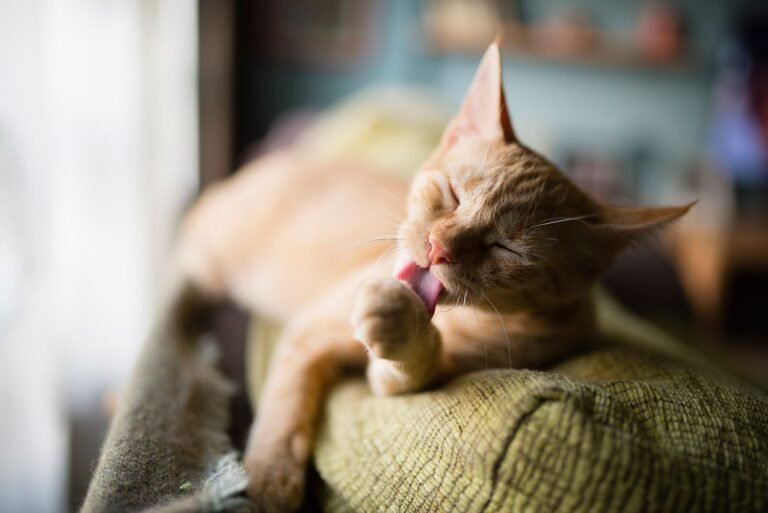
Teaching Your Cat to Tolerate Baths
While some cats may never enjoy bath time, it is possible to help them become more tolerant of water. Here’s how:
Gradual Introduction
Start by introducing your cat to water gradually. Use a damp cloth to gently stroke their fur or a fine mist spray to get them used to the sensation.
Positive Associations
Create a positive connection between your cat and water. Offer treats, gentle petting, and soothing words during water exposure. Over time, they may come to associate water with positive experiences.
Short Sessions
Keep bath time brief. Most cats won’t tolerate long baths, so aim for quick, efficient washes. Use a cat-friendly shampoo and work swiftly.
Gentle Support
Hold your cat securely during the bath to make them feel safe. Support their body and ensure they don’t slip in the water. Speak softly and reassuringly to maintain a calm environment.
Patience is Key
Be patient and understanding. Not all cats will ever love water, and that’s perfectly fine. Some cats may eventually tolerate baths, while others may never enjoy them. If your cat simply can’t handle bath time, consider alternative grooming methods like dry shampoo or professional grooming services.
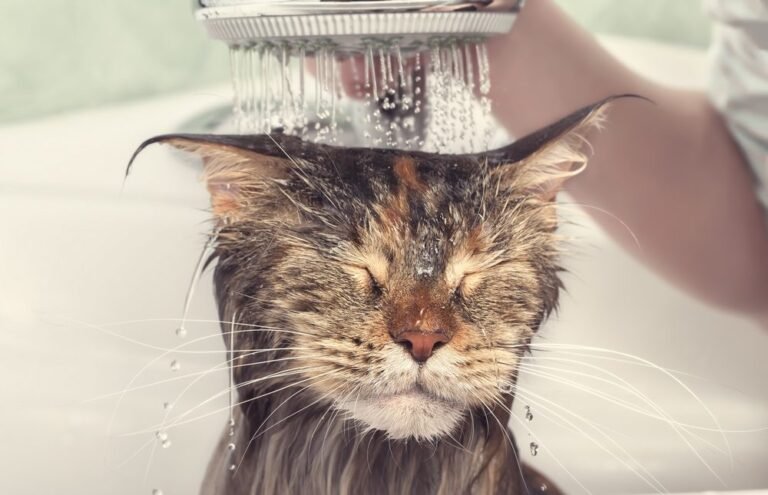
Also Read: 10 Grooming Tips For Cat Owners.
The Importance of Drying After a Bath
After successfully bathing your cat, the process isn’t complete until you’ve dried them off. Drying your cat’s fur is essential to prevent discomfort and ensure their well-being. Cats have a higher body temperature than humans, and leaving their fur wet can lead to chilling and discomfort. Use a soft, absorbent towel to gently dry your cat, and ensure they are warm and cozy after their bath.
In some cases, especially if your cat tolerates it well, you can consider using an automatic pet dryer. These devices are designed to blow a gentle stream of warm air over your cat’s coat, aiding in the drying process. Here are some benefits of using an automatic pet dryer:
- Efficiency: Pet dryers are faster at drying your cat’s fur compared to traditional methods, making the process quicker and more comfortable for your cat.
- Reduced Stress: Many cats find the noise and sensation of a blow dryer intimidating. Automatic pet dryers are often quieter, leading to a less stressful experience.
- Gentle Heat: These dryers provide consistent, gentle heat that won’t harm your cat’s sensitive skin or fur. The warmth can be soothing and comforting.
- Safety: Automatic pet dryers come with safety features to prevent overheating and ensure your cat’s well-being during the drying process.
Here are a few automatic pet dryers we’ve found for you, ranging from budget-friendly options to more luxurious options ones.
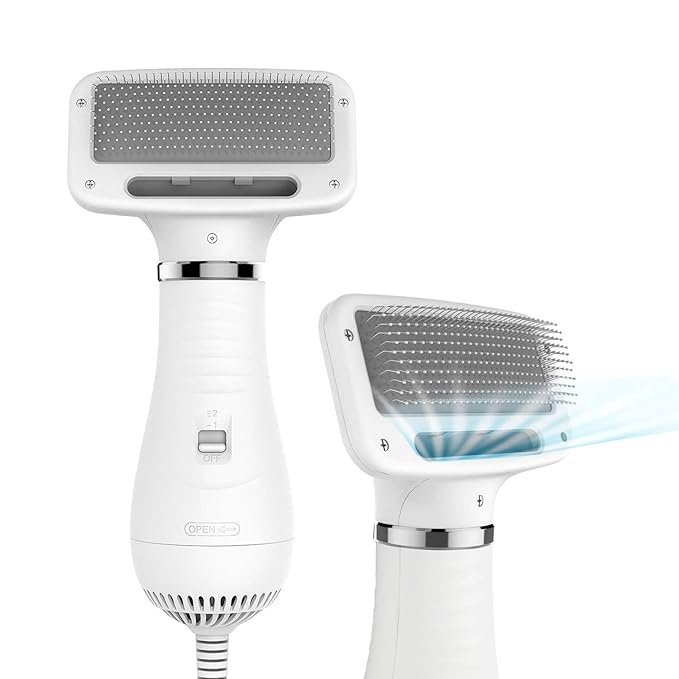
iPettie Pet Hair Dryer with Slicker Brush
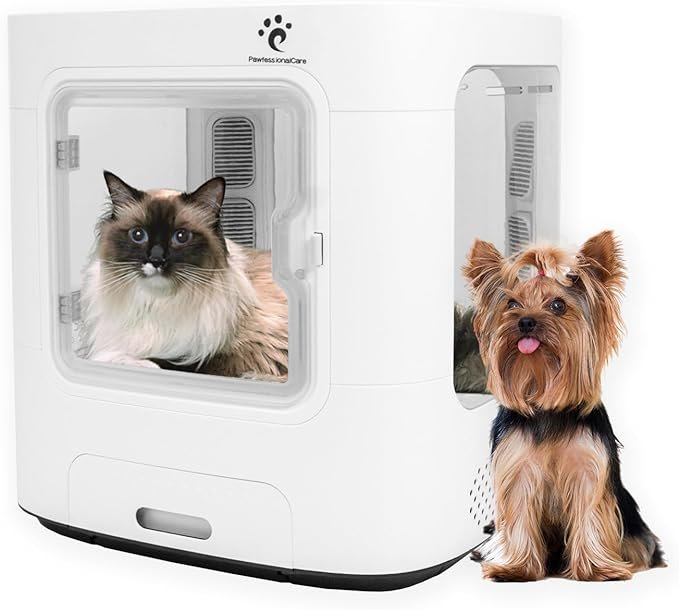
PawfessionalCare Automatic Pet Dryer

Ultra Quiet Automatic Pet Dryer

iPettie Automatic Pet Dryer Box

HomeRunPet Drybo Plus Automatic Pet Dryer
When using an automatic pet dryer, keep it at a safe distance to avoid overheating and make sure the air is warm, not hot. Always monitor your cat during the drying process to ensure they are comfortable and relaxed. Additionally, provide treats and soothing words to create a positive association with the pet dryer.
Remember that while automatic pet dryers can be helpful, they may not be suitable for all cats. Each cat is unique, and their comfort should be the top priority during the bathing and drying process.

